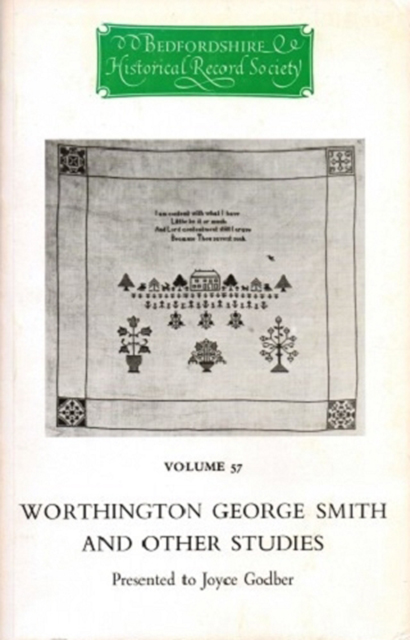Book contents
- Frontmatter
- Contents
- Contributors
- Illustrations
- Foreword
- Bedfordshire Chapelries: An Essay In Rural Settlement History
- Bedfordshire Heraldry: A Conspectus
- Middlemen In The Bedfordshire Lace Industry
- Joshua Symonds, An Eighteenth-Century Bedford Dissenting Minister
- The 1830 Riots In Bedfordshire - Background and Events
- A Bedfordshire Clergyman of The Reform Era and His Bishop
- Worthington George Smith
- Aspects of Anglo-Indian Bedford
- The 1919 Peace Riots In Luton
- Index
- Miscellaneous Endmatter
Bedfordshire Chapelries: An Essay In Rural Settlement History
Published online by Cambridge University Press: 03 August 2023
- Frontmatter
- Contents
- Contributors
- Illustrations
- Foreword
- Bedfordshire Chapelries: An Essay In Rural Settlement History
- Bedfordshire Heraldry: A Conspectus
- Middlemen In The Bedfordshire Lace Industry
- Joshua Symonds, An Eighteenth-Century Bedford Dissenting Minister
- The 1830 Riots In Bedfordshire - Background and Events
- A Bedfordshire Clergyman of The Reform Era and His Bishop
- Worthington George Smith
- Aspects of Anglo-Indian Bedford
- The 1919 Peace Riots In Luton
- Index
- Miscellaneous Endmatter
Summary
The list which follows is intended to be an apparatus for the local historian, archaeologist or topographer who wishes to use this sort of evidence, in combination with place-names, archaeological findings, and landscape study, for a closer investigation of the settlement history of the area. Before the end of the Anglo-Saxon kingdom a hierarchy of churches was already well-established in eastern England. The oldest or more important churches in a shire wrere the old minsters, one of which was often the seat of a bishop. To them the inhabitants paid dues at Pentecost, and at other times. Central churches in large royal estates also enjoyed a position of some importance and controlled other churches within the estate. Then came ordinary parish churches, collecting tithes and administering all sacraments within circumscribed areas which would later be called their parishes, although within the same areas other, subordinate churches, usually called chapels, might, with the agreement of the owner of the ‘mother’ church of the parish, provide mass, but no other sacraments, to the inhabitants of a distant hamlet, or the dependants of an isolated manor house. Since hamlet churches, and even some manorial chapels, would presumably have become parish churches if the settlement they served had existed, or had been sufficiently populous, at the unknown point when the parochial system crystallised, a list of them will at least provide an order, if not a dated chronology, of settlements. I have already experimented with this in Lincolnshire, with results that seem useful, but this Bedfordshire exercise seems to have been less satisfactory, for few clear patterns of settlement emerge, and some problems are posed which at first sight seem insoluble. Why, for example, are the parishes of Sandy and Eaton Socon so large, and why, despite much Roman and earlier habitation, are there so few subordinate settlements of any size within them in the medieval period?
The physical nature of the area and its ancient topography or landscape, must be the first consideration in assessing the settlement patterns created by incoming continental settlers after the Roman era had ended. Central and north-east Bedfordshire is a wide plain drained by the Ouse and its tributary the Ivel, and nowhere higher than 200 feet above sea-level.
- Type
- Chapter
- Information
- Worthington George Smith and Other Case Studies , pp. 9 - 20Publisher: Boydell & BrewerFirst published in: 2023



